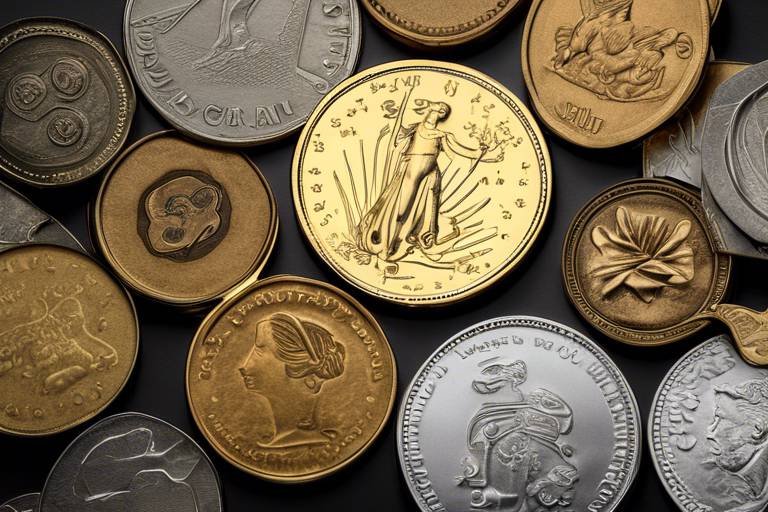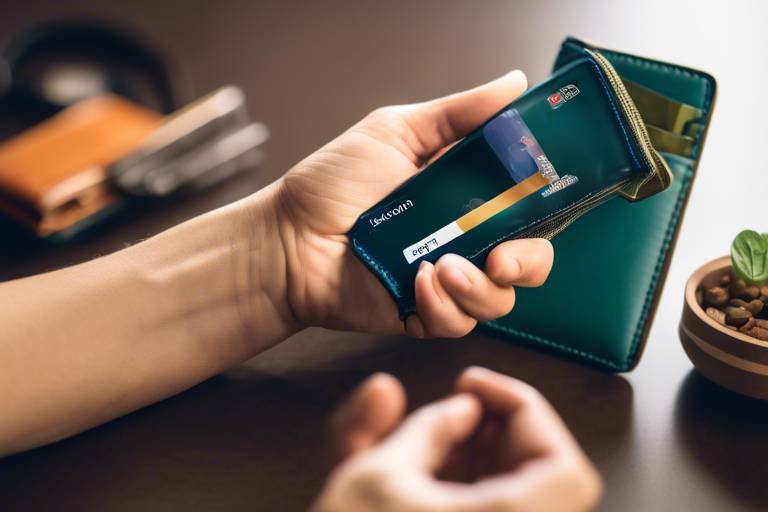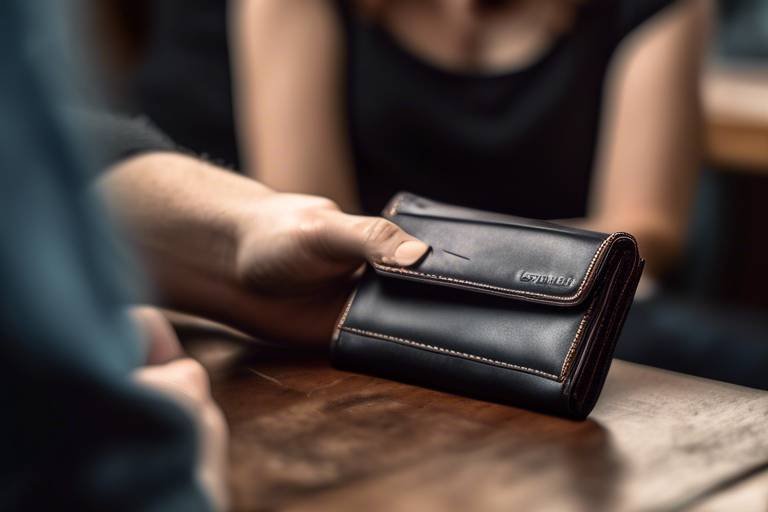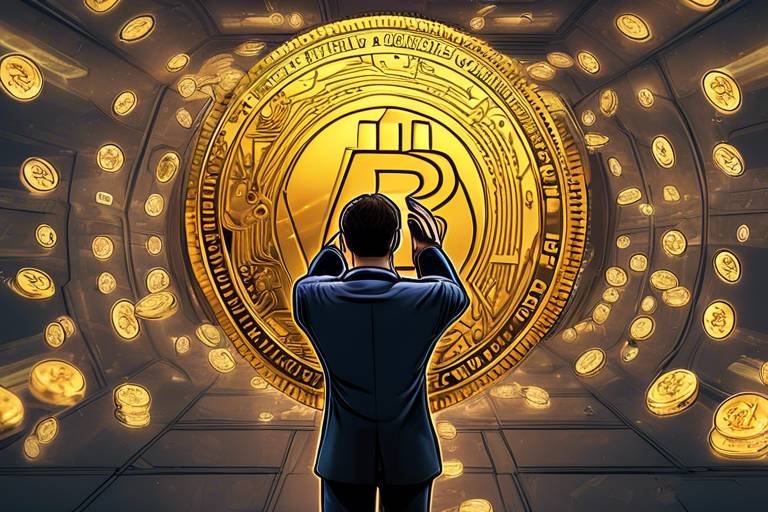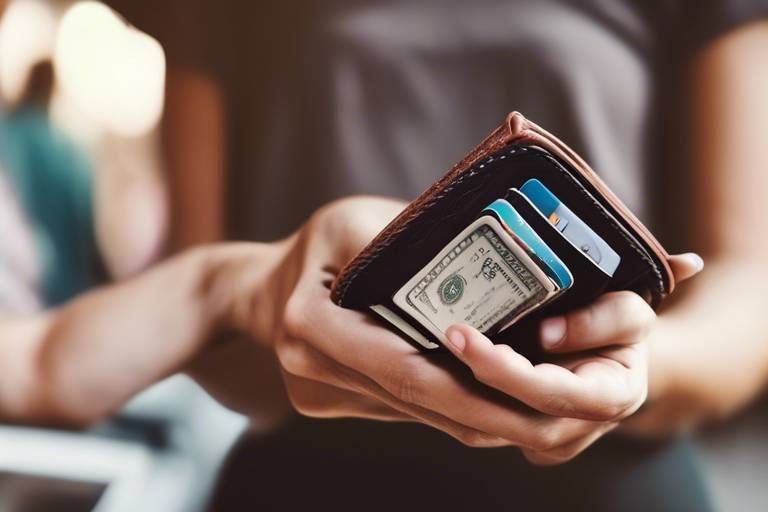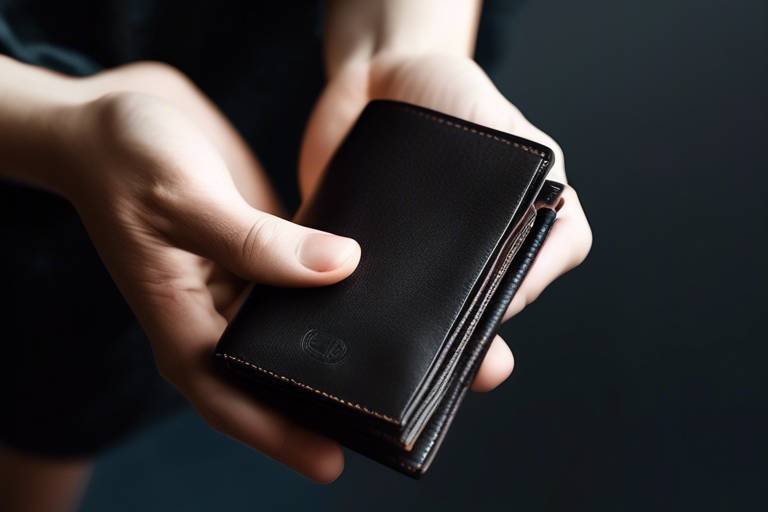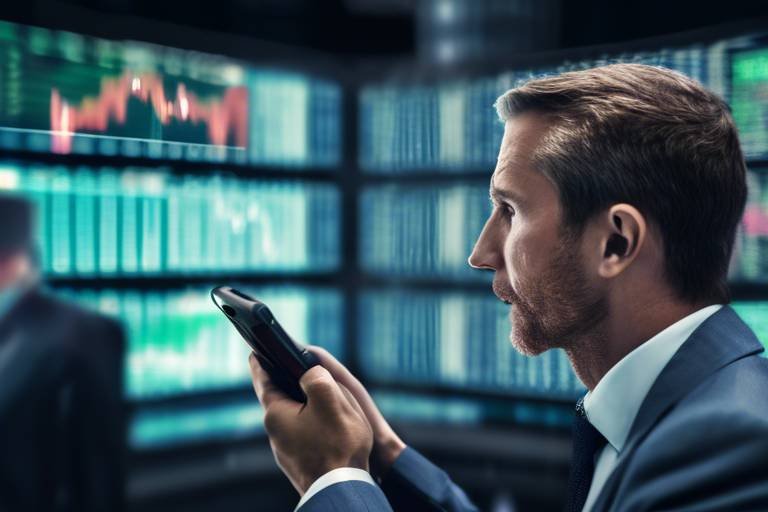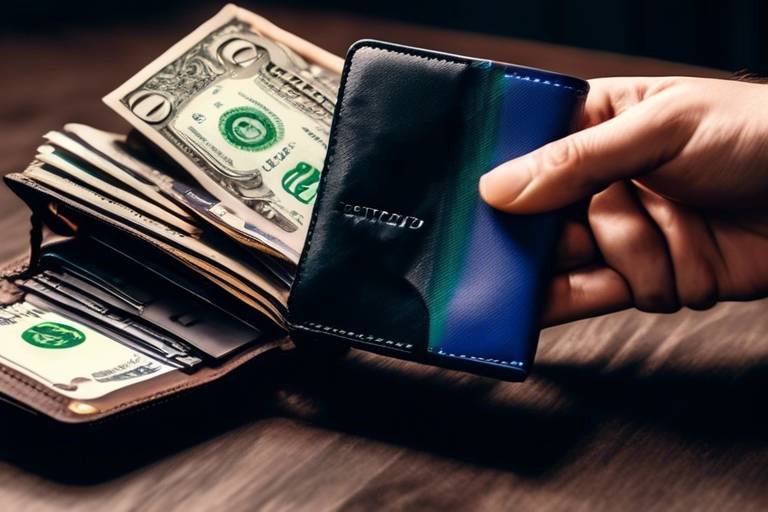How to Use Wallets for Digital Collectibles
In today's digital age, the world of collectibles has taken a fascinating turn. No longer are we confined to physical items like stamps or trading cards; instead, we are embracing the realm of digital collectibles. These unique assets, ranging from NFTs (Non-Fungible Tokens) to virtual items in online games, have skyrocketed in popularity. But how do we manage these digital treasures? That's where wallets come into play. In this article, we will explore the significance of wallets in managing digital collectibles, offering insights into their functionality, types, and best practices for secure storage and transactions.
So, what exactly are digital collectibles? Unlike traditional collectibles that you can physically hold, digital collectibles exist in the digital realm. They can represent anything from digital art to virtual real estate, and they are often secured using blockchain technology. This unique approach ensures that each collectible is one-of-a-kind and can be verified for authenticity. The major difference between digital and traditional collectibles lies in their ownership and transferability. With digital collectibles, ownership is recorded on a blockchain, making it easier to buy, sell, or trade without the need for intermediaries.
When it comes to managing digital collectibles, choosing the right wallet is crucial. There are various types of digital wallets, each serving different purposes. The two main categories are hot wallets and cold wallets. Each has its own set of advantages and disadvantages, catering to different needs and preferences. Understanding these wallets will help you make informed decisions about how to store and manage your digital assets.
Hot wallets are digital wallets that are connected to the internet, offering convenience and accessibility. They allow users to quickly access their digital collectibles, making them ideal for those who frequently trade or sell their assets. However, this convenience comes with a price—hot wallets are more vulnerable to security threats. If you think of hot wallets as a bustling marketplace, they are always open and accessible, but they also attract unwanted attention from potential thieves.
Hot wallets offer several benefits that make them appealing for collectors:
- Instant Access: You can quickly check your collection or make transactions without any delays.
- User-Friendly Interfaces: Most hot wallets are designed with simplicity in mind, making them easy to navigate for users of all experience levels.
- Compatibility: They often support a wide range of digital assets and are integrated with various platforms.
Despite their allure, hot wallets come with significant risks:
- Vulnerability to Hacks: Being connected to the internet makes hot wallets susceptible to cyber-attacks.
- Less Control: Many hot wallets are managed by third-party services, which can lead to potential issues with access and control over your assets.
On the other hand, cold wallets provide an extra layer of security by storing digital assets offline. This makes them an excellent choice for long-term holders of digital collectibles who prioritize safety over convenience. Think of cold wallets as a bank vault—secure, but not as easy to access. They are perfect for those who want to keep their assets safe from online threats.
Now that you have an understanding of the types of wallets available, how do you choose the right one for your digital collectibles? Here are some essential factors to consider:
When selecting a wallet, security should be your top priority. Look for wallets that offer features such as two-factor authentication, encryption, and backup options. These features will help protect your assets from unauthorized access and potential theft.
An intuitive user experience can significantly enhance your ability to manage digital collectibles. A wallet with a user-friendly interface can make it easier to navigate, ensuring that you can quickly access and trade your assets without frustration. After all, the last thing you want is to struggle with a complicated interface when you’re trying to enjoy your collection!
Q: What is the best type of wallet for beginners?
A: For beginners, a hot wallet is often recommended due to its ease of use and accessibility. However, it's important to be aware of the security risks.
Q: Can I use multiple wallets for my digital collectibles?
A: Absolutely! Many collectors use a combination of hot and cold wallets to balance convenience and security.
Q: How do I ensure the security of my cold wallet?
A: Always keep your cold wallet in a safe place, and make sure to back up your recovery phrases securely.

Understanding Digital Collectibles
In today's digital age, the concept of collectibles has evolved dramatically, giving rise to a new category known as digital collectibles. These are unique digital items that are often represented as non-fungible tokens (NFTs) or other virtual assets. Unlike traditional collectibles such as stamps, coins, or trading cards, which you can physically hold in your hand, digital collectibles exist solely in the online space. They leverage blockchain technology, which ensures their authenticity and ownership, making them truly one-of-a-kind.
So, what exactly sets digital collectibles apart from their traditional counterparts? For starters, digital collectibles can be easily created, bought, and sold on various online platforms. They can represent anything from digital art and music to virtual real estate and in-game items. This broad spectrum of possibilities is part of what makes them so appealing to collectors. Imagine owning a piece of digital artwork that no one else in the world has—it's like having a rare painting in your living room, but this one exists in the virtual realm!
Another significant difference is the transferability of digital collectibles. With traditional collectibles, transferring ownership can be a cumbersome process involving physical exchanges, appraisals, and sometimes even legal documentation. In contrast, with digital collectibles, the ownership transfer is instantaneous and can be executed with just a few clicks. This ease of transaction is one of the driving forces behind the growing interest in digital collectibles.
Moreover, digital collectibles often come with built-in features that enhance their value and functionality. For instance, some NFTs offer unlockable content, meaning that owning the collectible grants you access to exclusive experiences, merchandise, or even future drops. This adds an exciting layer of engagement that traditional collectibles simply can't match. You might even find yourself part of a vibrant community of fellow collectors, sharing tips and showcasing your prized possessions in online forums and social media.
However, while the allure of digital collectibles is undeniable, it's essential to approach them with a clear understanding of their nature. The market can be highly volatile, with values fluctuating dramatically based on trends, demand, and the overall sentiment in the crypto space. This unpredictability can make investing in digital collectibles both thrilling and risky. Therefore, collectors must stay informed and consider their purchases carefully.
In summary, digital collectibles represent a fascinating intersection of technology, art, and commerce. They offer a unique way to collect and engage with digital assets, creating new opportunities for enthusiasts and investors alike. As you explore the world of digital collectibles, remember to keep an open mind and be prepared for the exciting journey ahead!

Types of Digital Wallets
When it comes to managing digital collectibles, understanding the different types of digital wallets is essential. Just like how you wouldn’t store your valuable baseball cards in a shoebox, you need to think about how to securely store your digital assets. Digital wallets come in various forms, each tailored to meet specific needs, whether you're a casual collector or a serious investor. The two main categories of digital wallets are hot wallets and cold wallets, and each has its own set of features, benefits, and risks.
Hot wallets are like your favorite coffee shop – always open and ready for a quick transaction. These wallets are connected to the internet, making them incredibly convenient for those who frequently buy, sell, or trade digital collectibles. However, this convenience comes with a catch. Just as a crowded café might have a few pickpockets lurking about, hot wallets can be vulnerable to online threats. It's vital to weigh the ease of access against the potential risks.
On the flip side, we have cold wallets, which are akin to a safe deposit box in a bank. They store your digital assets offline, providing an extra layer of security. This makes cold wallets particularly appealing for long-term holders who want to keep their collectibles safe from the prying eyes of hackers. While cold wallets might not offer the same instant access as hot wallets, they are generally considered more secure. Think of them as your digital fortresses, protecting your valuable assets from the chaotic world of the internet.
To help you understand these wallet types better, here’s a quick comparison:
| Wallet Type | Connection | Security Level | Best For |
|---|---|---|---|
| Hot Wallets | Online | Low to Medium | Frequent Traders |
| Cold Wallets | Offline | High | Long-Term Holders |
Ultimately, the choice between hot and cold wallets boils down to your personal needs and how you plan to interact with your digital collectibles. If you're someone who enjoys the thrill of trading and wants quick access to your assets, a hot wallet may be the right choice for you. However, if you're in it for the long haul and want to ensure your collectibles are as secure as possible, a cold wallet might be the way to go. Remember, just like in real life, the key to success in the digital collectible space is to find the right balance between accessibility and security.

Hot Wallets
Hot wallets are the digital equivalent of a bustling café where collectors can easily pop in and out to grab their favorite digital collectibles. These wallets are connected to the internet, which makes them incredibly convenient for users who want quick access to their assets. Whether you’re trading NFTs or managing virtual currencies, hot wallets provide a seamless experience that allows for rapid transactions. Imagine being able to buy, sell, or trade your collectibles with just a few clicks—this is the allure of hot wallets!
However, with great convenience comes great responsibility. The very nature of being online exposes hot wallets to a range of security risks. Think of it like leaving your front door wide open in a busy neighborhood; while you might enjoy the ease of coming and going, you’re also inviting unwanted guests. Hackers and cybercriminals often target hot wallets, looking for vulnerabilities to exploit. This means that while you can enjoy the instant access and user-friendly interfaces they offer, you must also be vigilant about securing your assets.
When considering a hot wallet, it's essential to weigh the advantages against the disadvantages. Here’s a quick breakdown:
| Advantages | Disadvantages |
|---|---|
|
|
In summary, hot wallets serve as a fantastic tool for those who thrive on the fast-paced nature of digital collectibles. Just remember to implement strong security practices, like enabling two-factor authentication and regularly updating your software. By doing so, you can enjoy the benefits of hot wallets while minimizing the risks associated with their use. So, if you’re ready to dive into the world of digital collectibles, a hot wallet might just be the perfect starting point!

Advantages of Hot Wallets
Hot wallets have become a popular choice for digital collectible enthusiasts, and it's easy to see why. One of the most significant advantages of using hot wallets is their instant accessibility. Imagine you’re at a virtual art auction, and a unique NFT catches your eye. With a hot wallet, you can quickly make a purchase without the hassle of transferring funds from a cold wallet or waiting for transactions to process. This immediacy can be a game-changer in the fast-paced world of digital collectibles.
Another major benefit is the user-friendly interface that most hot wallets offer. Many of these wallets are designed with simplicity in mind, making it easy even for beginners to navigate and manage their digital assets. Whether you’re viewing your collection, sending or receiving assets, or checking market trends, a well-designed hot wallet can streamline the entire process. This accessibility encourages more frequent engagement with your collectibles, thus enhancing your overall experience.
Moreover, hot wallets often come with integrated features that allow for seamless trading and transactions. Many platforms that support hot wallets enable users to trade directly within the wallet interface, eliminating the need to switch between multiple applications. This can save time and reduce the chances of making errors during transactions. For collectors who are always on the lookout for new additions to their digital collections, this feature can be incredibly valuable.
Additionally, hot wallets usually support a wide range of digital assets, from popular NFTs to various cryptocurrencies. This versatility means that users can manage multiple types of collectibles all in one place, making it easier to keep track of their investments. The convenience of having everything organized in a single wallet cannot be overstated—it’s like having a personal gallery for your digital art right at your fingertips!
However, while hot wallets offer these attractive advantages, it’s essential to remember that they come with their own set of risks, which we’ll explore further in the next section. But for those who prioritize ease of access and streamlined transactions, hot wallets can be a fantastic choice for managing digital collectibles.
- What is a hot wallet? A hot wallet is a type of digital wallet that is connected to the internet, allowing for quick access and transactions with digital assets.
- Are hot wallets safe? While hot wallets are convenient, they are more vulnerable to hacks and online threats compared to cold wallets, which store assets offline.
- Can I use a hot wallet for long-term storage? Hot wallets are typically better suited for short-term trading and transactions rather than long-term storage due to security concerns.
- How do I choose the best hot wallet? When selecting a hot wallet, consider factors such as security features, user experience, and the range of supported digital assets.

Disadvantages of Hot Wallets
While hot wallets provide unparalleled convenience, they come with a set of significant disadvantages that every collector should be aware of. Imagine walking around with a wallet full of cash, but instead of being tucked safely in your pocket, it's wide open for anyone to see. That's the reality of hot wallets. They are always connected to the internet, making them vulnerable to various online threats. Cybercriminals are constantly on the lookout for weaknesses in these wallets, and if they find a way in, they can easily access your precious digital collectibles.
One of the most pressing concerns is the risk of hacking. Hot wallets are prime targets for hackers due to their online connectivity. If you're using a hot wallet, you might be just one phishing email or malware attack away from losing your entire collection. Even reputable wallets have been compromised in the past, leaving users devastated. The ease of access that hot wallets offer can quickly turn into a double-edged sword when security is compromised.
Another disadvantage is the reliance on third-party services. Many hot wallets are provided by centralized platforms, which means you're entrusting your assets to someone else. If that platform experiences downtime, gets hacked, or even decides to shut down, you could lose access to your collectibles. It's like putting your money in a bank that might not be around tomorrow. In addition, if you forget your login details or if the platform has a technical glitch, you could find yourself locked out of your own assets.
In terms of user experience, while many hot wallets boast user-friendly interfaces, they often come with a trade-off in security features. For instance, some might not offer two-factor authentication or may have weak encryption protocols. This makes them easier to use, but also easier for hackers to exploit. Therefore, while you might enjoy the seamless experience of trading and managing your collectibles, you should always be aware that this ease of use can come at the cost of security.
In summary, while hot wallets are fantastic for quick access and trading, they pose notable risks that should not be ignored. If you're serious about collecting digital assets, it's essential to weigh these disadvantages carefully against their advantages. After all, the thrill of collecting should never be overshadowed by the fear of losing your valuable assets.
- What is a hot wallet? A hot wallet is a digital wallet that is connected to the internet, allowing for easy access and quick transactions.
- Are hot wallets safe? While hot wallets are convenient, they are more susceptible to hacking and online threats compared to cold wallets.
- How can I secure my hot wallet? Use strong passwords, enable two-factor authentication, and be cautious of phishing attempts to enhance security.
- Should I only use hot wallets? It's advisable to use a combination of hot and cold wallets, depending on your trading frequency and security needs.

Cold Wallets
When it comes to safeguarding your digital collectibles, are like a vault for your treasures. Unlike their hot counterparts, cold wallets are not connected to the internet, which significantly reduces the risk of hacks and online threats. Imagine storing your valuable collectibles in a safe deposit box rather than leaving them out in the open; that’s the essence of what cold wallets offer. They are designed for those who prioritize security above all else, especially long-term holders who are not actively trading their assets.
There are a few different types of cold wallets, each with its unique characteristics. The most common ones include hardware wallets and paper wallets:
- Hardware Wallets: These are physical devices that store your digital assets offline. They are highly secure and often come with additional features such as backup options and password protection.
- Paper Wallets: This is a more traditional method where your private keys are printed on paper. While they are immune to online threats, the risk lies in physical damage or loss of the paper itself.
Using cold wallets can be a bit cumbersome compared to hot wallets, especially when you want to access your collectibles quickly. However, the peace of mind that comes with knowing your assets are secure is invaluable. For those who have invested significant amounts in digital collectibles, the extra steps to manage a cold wallet are often worth it.
It's essential to understand that while cold wallets offer enhanced security, they also come with some responsibilities. You need to ensure that you keep your recovery phrases and private keys safe and secure. Think of them as the keys to your vault; if you lose them, you could lose access to your entire collection. Therefore, always make multiple copies of your recovery phrases and store them in separate, secure locations.
In summary, cold wallets are an excellent option for those who want to protect their digital collectibles from online threats. They provide a level of security that hot wallets simply cannot match. If you are serious about your collection, investing in a cold wallet could be one of the best decisions you make.
Here are some common questions regarding cold wallets:
- What is the main advantage of using a cold wallet? The primary advantage is the enhanced security, as cold wallets are not connected to the internet, making them less vulnerable to hacks.
- Can I still trade my collectibles if I use a cold wallet? Yes, but it requires a few extra steps. You’ll need to transfer your assets to a hot wallet temporarily for trading purposes.
- Are cold wallets completely foolproof? While they are much more secure than hot wallets, no system is entirely foolproof. It’s crucial to keep your recovery phrases safe and secure.

Choosing the Right Wallet
When it comes to managing your digital collectibles, choosing the right wallet is crucial. Just like selecting the perfect bag for your valuable items, your digital wallet needs to fit your unique needs and lifestyle. The world of digital assets is vast and can be overwhelming, but with the right guidance, you can navigate it smoothly. So, what should you consider when picking a wallet?
First and foremost, you need to think about security features. In a digital landscape where hacks and scams are rampant, prioritizing security is non-negotiable. Look for wallets that offer multi-factor authentication, encryption, and backup options. A wallet that provides you with the ability to control your private keys is also essential, as it ensures that you are the only one with access to your assets. Remember, your collectibles are only as safe as the wallet they reside in!
Next up, consider the user experience. The last thing you want is to struggle with a complicated interface while trying to manage your digital treasures. A user-friendly wallet can make all the difference, especially if you're new to the world of digital collectibles. Look for wallets that offer a clean design, easy navigation, and helpful customer support. After all, you want to spend more time enjoying your collectibles rather than wrestling with technology!
Another important factor to think about is the type of digital assets you plan to store. Different wallets cater to different types of collectibles, whether they are NFTs, cryptocurrencies, or other virtual assets. For instance, if you’re primarily dealing with NFTs, you might want a wallet that specializes in that area, offering features tailored for NFT management.
Additionally, consider the compatibility of the wallet with various platforms. Some wallets work seamlessly with specific marketplaces or blockchain networks, while others may have limitations. Ensure that the wallet you choose integrates well with the platforms you intend to use. This compatibility can save you a lot of hassle down the road.
Finally, don’t forget to take into account the cost associated with the wallet. While some wallets are free, others may charge fees for transactions or premium features. Make sure to read the fine print and understand what you are paying for. Sometimes, investing a little more in a secure and user-friendly wallet can save you a lot of trouble in the long run.
To summarize, when choosing the right wallet for your digital collectibles, keep these key points in mind:
- Security Features: Look for multi-factor authentication and encryption.
- User Experience: Choose a wallet with an intuitive interface.
- Type of Assets: Ensure the wallet supports the collectibles you own.
- Compatibility: Check for integration with your preferred platforms.
- Cost: Be aware of any fees associated with the wallet.
By taking the time to carefully consider these factors, you can confidently select a wallet that not only protects your digital collectibles but also enhances your overall experience in the world of digital assets.
1. What is the difference between hot wallets and cold wallets?
Hot wallets are connected to the internet and allow for quick access to your digital assets, while cold wallets are offline and provide enhanced security for long-term storage.
2. Can I use multiple wallets for my digital collectibles?
Absolutely! Many collectors use a combination of hot and cold wallets to balance convenience and security.
3. How do I know if a wallet is secure?
Look for features like multi-factor authentication, encryption, and user reviews. Research the wallet's reputation in the community before making a decision.
4. Are there fees associated with using digital wallets?
Yes, some wallets charge fees for transactions or premium features. Always check the wallet's pricing structure before signing up.

Security Features
When it comes to managing digital collectibles, in a wallet are not just an option; they are a necessity. Imagine your digital assets as treasures in a vault. Would you leave the vault door wide open? Of course not! The same principle applies to digital wallets. First and foremost, look for wallets that offer two-factor authentication (2FA). This extra layer of security requires not only your password but also a second form of verification, such as a code sent to your phone. It's like having a double lock on your vault—much harder for thieves to crack.
Another essential feature is encryption. Wallets that encrypt your data make it much more difficult for hackers to access your information. Think of encryption as a secret language that only you and your wallet can understand. If a hacker tries to intercept your data, all they'll get is a jumbled mess. Additionally, consider wallets that allow you to set custom withdrawal limits. This feature can help you control how much can be taken out at any given time, adding another layer of protection to your assets.
Moreover, the backup and recovery options that a wallet provides are crucial. A good wallet will offer you a way to back up your data securely, often through a recovery phrase. This is like having a spare key to your vault. If you ever lose access to your wallet, you can use this key to regain entry. However, be careful where you store this recovery phrase; it's vital to keep it safe and out of reach from prying eyes.
Lastly, always check for regular software updates. Just like you wouldn't ignore a rusting lock on your vault, you shouldn't overlook updates to your wallet. These updates often contain security patches that protect against newly discovered vulnerabilities. A wallet that is frequently updated shows that the developers are committed to maintaining a secure environment for your digital collectibles.
In summary, when choosing a wallet for your digital collectibles, prioritize security features like two-factor authentication, encryption, custom withdrawal limits, backup options, and regular updates. By doing so, you significantly reduce the risk of losing your precious digital assets to theft or hacking attempts. Remember, in the world of digital collectibles, a secure wallet is your best friend!
- What is a digital collectible? Digital collectibles are unique digital items, often represented as NFTs (Non-Fungible Tokens), that can be bought, sold, or traded.
- How do I choose the right wallet for my digital collectibles? Consider factors like security features, user experience, and whether you need a hot or cold wallet based on your trading habits.
- Are hot wallets safe? While hot wallets provide convenience, they are more susceptible to hacks. It’s crucial to implement strong security measures.
- What is a cold wallet? A cold wallet is a type of digital wallet that stores your assets offline, providing enhanced security for long-term holders.

User Experience
When it comes to managing digital collectibles, user experience is an absolute game-changer. Imagine trying to navigate a complex maze with no clear path; that’s what using a poorly designed wallet feels like. A smooth, intuitive interface can make all the difference in how effectively you manage your digital assets. After all, if you can’t easily access your collectibles or make transactions without feeling like you’re solving a Rubik's cube, what’s the point?
One of the key aspects of a great user experience is simplicity. Wallets should be designed to cater to both beginners and seasoned collectors. A user-friendly interface means that even those new to digital collectibles can quickly grasp how to use the wallet without a steep learning curve. Look for wallets that offer clear navigation, easy access to your assets, and straightforward transaction processes. The last thing you want is to feel overwhelmed by technical jargon or a cluttered dashboard.
Another essential factor is responsiveness. In the fast-paced world of digital collectibles, you want a wallet that responds quickly to your commands. Delays in loading times or processing transactions can lead to missed opportunities, especially if you’re trying to snag a limited-edition NFT or respond to a time-sensitive trade. Therefore, ensure that the wallet you choose is optimized for speed and efficiency.
Moreover, consider the support provided by the wallet's developers. A wallet that offers robust customer support can significantly enhance your user experience. Whether it’s through live chat, email, or a comprehensive FAQ section, having access to assistance when you need it can save you from potential headaches. It’s like having a safety net; knowing that help is just a click away can give you peace of mind.
Lastly, don’t underestimate the importance of customization. A wallet that allows you to personalize your experience can make managing your digital collectibles feel more engaging. Features like customizable dashboards, themes, and notifications can help you tailor the wallet to your preferences. This not only enhances usability but also makes the experience feel more personal and enjoyable.
In summary, when selecting a wallet for your digital collectibles, prioritize user experience. A wallet that is simple, responsive, supportive, and customizable can transform your collecting journey from a chore into a delightful adventure. After all, managing your assets should feel like a walk in the park, not a trek through a jungle!
- What are digital collectibles? Digital collectibles are unique digital items, such as NFTs, that can be bought, sold, and traded.
- What is the difference between hot and cold wallets? Hot wallets are connected to the internet for easy access, while cold wallets store assets offline for enhanced security.
- How do I choose the right wallet? Consider factors like security features, user experience, and customer support when selecting a wallet.
- Are hot wallets safe? While they offer convenience, hot wallets are more vulnerable to hacks compared to cold wallets.
- Can I use multiple wallets? Yes, many collectors use a combination of hot and cold wallets to balance convenience and security.
Frequently Asked Questions
- What are digital collectibles?
Digital collectibles are unique digital items, often represented as NFTs (non-fungible tokens) or virtual assets. They can range from digital art to virtual trading cards, and they differ from traditional collectibles in that they exist solely in the digital realm, offering a new way to own and trade unique items.
- What is the difference between hot wallets and cold wallets?
Hot wallets are online wallets that provide quick access to your digital collectibles, making them ideal for frequent trading. However, they are more vulnerable to hacks. Cold wallets, on the other hand, store your assets offline, offering enhanced security for long-term holders but less convenience for trading.
- How do I choose the right wallet for my digital collectibles?
When selecting a wallet, consider factors like security features, user experience, and the type of collectibles you own. Look for wallets that offer two-factor authentication, easy-to-navigate interfaces, and compatibility with the specific types of digital assets you plan to manage.
- Are hot wallets safe for storing digital collectibles?
While hot wallets provide convenience, they are susceptible to online threats. If you frequently trade digital collectibles, a hot wallet might be suitable, but for long-term storage, consider using a cold wallet to protect your assets from potential hacks.
- What security features should I look for in a digital wallet?
Essential security features include two-factor authentication, encryption, backup options, and a strong reputation in the community. Ensure that the wallet you choose has a track record of keeping users' assets safe from breaches and hacks.
- Can I use multiple wallets for my digital collectibles?
Absolutely! Many collectors use a combination of hot and cold wallets to balance convenience and security. By diversifying your storage methods, you can better protect your assets while still having easy access for trading.
- What happens if I lose access to my wallet?
If you lose access to your wallet, recovery depends on the wallet type and its backup options. Most wallets provide recovery phrases or keys during setup. If you have these, you can restore your wallet. Without them, regaining access may be impossible, which emphasizes the importance of securing your recovery information.


